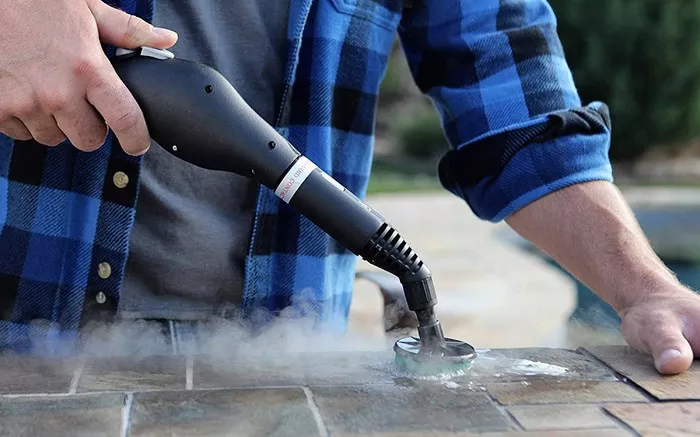The problem of bugs in clothes and furniture is a common concern for many households. Whether it’s bed bugs, dust mites, or other pests, these unwelcome guests can cause discomfort, allergic reactions, and general distress. Finding an effective and safe method to eliminate these pests is crucial. Clothes steamers have emerged as a potential solution, praised for their ability to sanitize fabrics without the use of harsh chemicals. This article aims to explore the effectiveness of clothes steamers in killing bugs and provide practical advice on how to use them for this purpose.
Can Clothes Steamers Kill Bugs?
How Steam Works to Kill Bugs
Steam is an effective means of killing bugs because it relies on high temperatures to penetrate their exoskeletons and destroy their internal structures. When bugs are exposed to steam, the heat causes proteins within their bodies to denature, leading to their death. The moisture from the steam also helps to ensure that the heat is evenly distributed, increasing its effectiveness.
Lethal Temperature for Common Bugs
Different types of bugs have varying levels of heat tolerance. For example, dust mites generally die at temperatures above 130°F (54°C). Bed bugs, which are more resilient, require temperatures of around 120°F (49°C) to be killed effectively. It’s crucial to note that the temperature must be sustained for a sufficient period to ensure all stages of the bugs’ life cycle, including eggs, are eradicated.
Temperature Range of Most Clothes Steamers
Most household clothes steamers produce steam at temperatures between 200°F (93°C) and 300°F (149°C). This temperature range is typically sufficient to kill a variety of bugs, including bed bugs and dust mites, provided the steam is applied correctly and for an adequate amount of time. The high temperature of the steam can penetrate fabrics and reach hidden bugs in seams and crevices, making steamers a potentially effective tool for bug control.
See also: How to Use Steam to Freshen and Refine Your Clothes?
Effectiveness of Clothes Steamers for Bug Control
Pros
One of the primary advantages of using a clothes steamer for bug control is its ability to penetrate fabrics and crevices where bugs often hide. Unlike sprays and powders, steam can reach deep into mattresses, upholstery, and clothing, ensuring that bugs do not have safe havens to escape the treatment. Additionally, steam is a chemical-free alternative, making it a safer choice for individuals who are sensitive to pesticides or prefer to avoid chemical treatments in their homes.
Cons
Despite the advantages, there are limitations to using clothes steamers for bug control. One significant drawback is that not all steamers may reach the necessary temperatures to kill all types of bugs effectively. For instance, if the steamer does not maintain a temperature above 120°F (49°C) consistently, it may not be effective against bed bugs. Another challenge is ensuring that all bugs are exposed to the steam for a sufficient duration. Bugs that are hidden deep within furniture or behind obstacles may not receive enough heat to be killed.
Maximizing Effectiveness of Steaming for Bug Control
Tips for Using a Clothes Steamer
To maximize the effectiveness of a clothes steamer in killing bugs, it’s essential to use it correctly. Here are some practical tips:
Focus on Areas Where Bugs Hide: Pay particular attention to seams, mattress tufts, and folds in fabric where bugs are likely to hide. These areas often harbor the highest concentrations of pests.
Use Slow and Deliberate Strokes: Move the steamer slowly over the surface to ensure that the heat has time to penetrate deeply. Quick passes may not provide enough heat exposure to kill the bugs effectively.
Monitor Surface Temperature: Consider using an infrared thermometer to check the surface temperature of the treated areas. This can help ensure that the steam is hot enough to kill the bugs.
Limitations
While steaming can be an effective part of an integrated pest management approach, it is not a complete solution for severe infestations. Steaming alone may not reach bugs hidden in inaccessible areas, and some eggs might survive if they are not directly exposed to the heat. For these reasons, it’s advisable to combine steaming with other methods such as thorough vacuuming, washing infested items in hot water, and using mattress encasements.
Alternatives and When to Call a Professional
Alternative Methods
In addition to using a clothes steamer, there are other methods to control bug infestations. High-temperature dryers can be effective in killing bugs on clothing and bedding. Professional pest control services can provide comprehensive treatments, including heat treatments that raise the temperature of an entire room to lethal levels for bugs.
When to Seek Professional Help
For large infestations or when DIY methods fail to control the problem, it is best to seek professional help. Pest control professionals have access to more potent treatments and can ensure that all areas of the home are treated thoroughly. They can also provide advice on preventing future infestations.
Conclusion
Clothes steamers can be a valuable tool in the fight against bugs in clothes and furniture. They offer a chemical-free method to penetrate fabrics and crevices, effectively killing bugs with high temperatures. However, steamers have limitations and may not be effective for all types of bugs or severe infestations. For the best results, steaming should be combined with other pest control methods, and professional help should be sought for persistent or large-scale infestations. By understanding the capabilities and limitations of clothes steamers, homeowners can make informed decisions about managing bug problems in their homes.

